Video Gamer is reader-supported. When you buy through links on our site, we may earn an affiliate commission. Prices subject to change. Learn more
If you’re trying to decide between the Steam Deck OLED vs Lenovo Legion Go then I’m here to help. I’ve recently reviewed both handheld gaming PCs and now I’m pitting them both head-to-head comparing their price, design, specs, display, and performance to help you find which option is right for you.
The recently released Steam Deck OLED features a brand new panel boasting deep blacks and vibrant colors with stellar software support, and the Lenovo Legion Go packs a punch in terms of its power potential and Nintendo Switch-inspired design. It’s all to play for, so without wasting any more time, let’s get into it.
Steam Deck OLED vs Lenovo Legion Go – Price
The Steam Deck OLED is available now with a starting price of $549 / £479 for the 512GB variant and $649 / £569 for the 1TB version. These are the same rates that the previous 256GB and 512GB LCD models sold for, so Valve has not increased the price with the improved display and capacity. That positions this handheld PC as one of the more competitively priced offerings on the market, which hovers around the same rates as the ASUS ROG Ally’s base model.
In contrast, the Lenovo Legion Go carries a starting MSRP of $699.99 / £699.99 for the 512GB variant and $749.99 for the 1TB offering. At the time of writing, this capacity doesn’t appear to be available in the UK and Europe in general but this could change in the coming months. There’s no getting around the fact that the Go is an expensive mainstream handheld when compared to its competition, despite seeming more palatable when paired against the likes of the AyaNeo 2 (which starts at $1,310).
With this information in mind, we think that the Steam Deck OLED model offers the best value for money here. There’s a difference of 27% (or $151) between the two handhelds and that’s why Valve’s latest hardware revision takes the win in this respect.
- Winner: Steam Deck OLED
Steam Deck OLED vs Lenovo Legion Go – Design
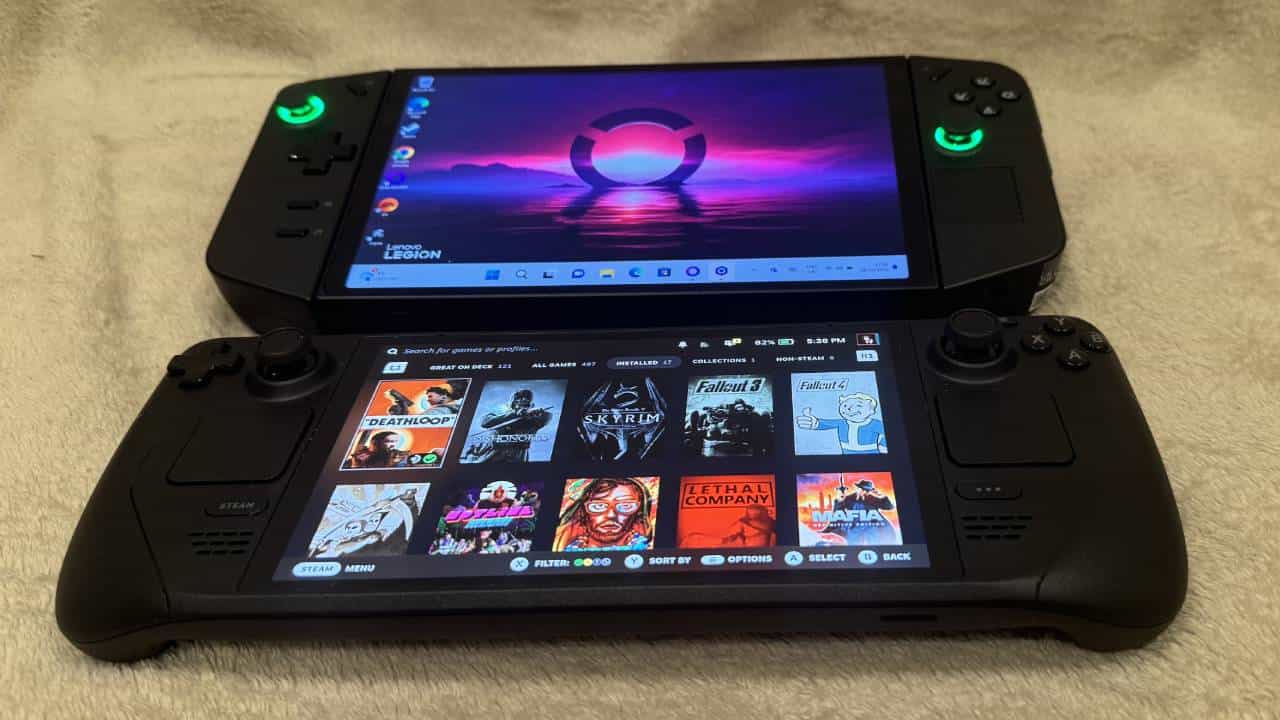
There are two different schools of design taken with the Steam Deck OLED vs Lenovo Legion Go. The former, being the frontrunner and the first major mainstream success of its kind takes a practical approach whereas the latter attempts to appeal to console gaming fans.
Specifically, the Steam Deck OLED borrows the great ideas from Valve’s Steam Controller of yesteryear with dual touchpads for increased accuracy in the likes of RTS and other genres where a controller isn’t necessarily the best way to play. There are also four remappable paddles on the back similar to what you’ll find from the best PS5 controllers which give you further customization options in terms of your control scheme. You’re even able to load and save custom control profiles per game through the client’s launcher.
The Steam Deck OLED isn’t necessarily the most elegant handheld gaming PC ever developed, but it’s clear that Valve has favored function over form. There’s enough real estate for your hands to hold the device comfortably in a way that won’t obscure the stereo speakers or get in the way of the touchscreen. It’s familiar and ergonomically designed which makes it ideal for long play sessions.
The Lenovo Legion Go asks what would happen if you beefed up the Nintendo Switch hardware with computing components. That means borrowing aspect’s from the Japanese console giant’s winning formula including detachable controllers and a kickstand which add tabletop play as well as traditional handheld gaming. This feels like more of a necessity than an added option, though, because there’s some meat on the Go’s bones as it weighs in at a staggering 1.88 lbs (854g).
There’s a reason for the heft, however. That’s because the Lenovo Legion Go includes a much larger screen than you’ll find on the Steam Deck OLED or the ASUS ROG Ally. Replacing its competitors 7.4-inch and 7-inch display is a mammoth 8.8-inch panel. We’ll get more into the specifics of the screen later down the page, but the important takeaway here is that there’s more real estate for the display. While the Go attempts to ape the Switch, it doesn’t quite get the snappiness of the detachable controllers right, unfortunately.
While I can appreciate the innovative thinking here and provided versatility, the weight of the device means it’s not ideal as a portable system compared to the competition. For this reason, I’m awarding the Steam Deck OLED the win in this respect.
- Winner: Steam Deck OLED
Steam Deck OLED vs Lenovo Legion Go – Specs
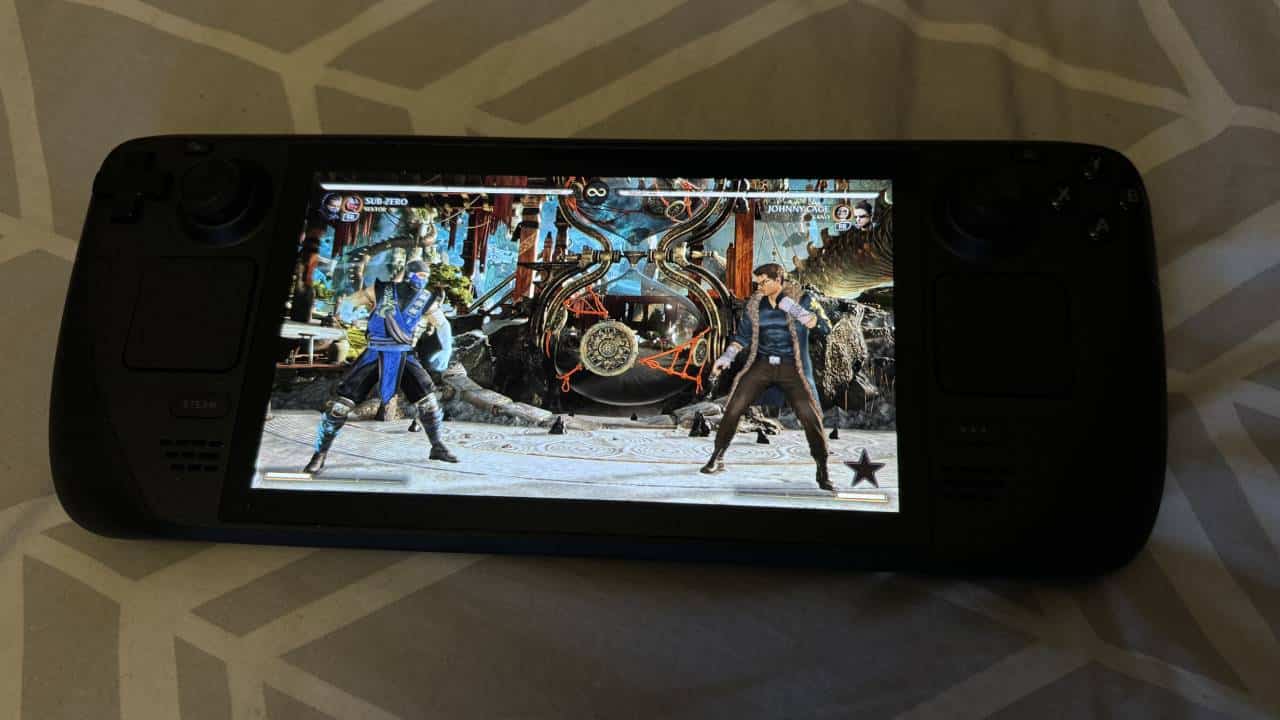
A deep dive of the hardware is where the battle of Steam Deck OLED vs Lenovo Legion Go starts to turn in the latter’s favor. Let’s start by analyzing what’s inside of the former. Powering the Steam Deck OLED is a custom AMD APU built upon a 6nm process. It’s fueled by a Zen 2 CPU with four cores and eight threads clocked up to 3.5 GHz. On the graphics front, there’s 8 RDNA 2 CUs. There’s also 16GB LPDDR5 RAM clocked at 6400 MT/s, too.
While still powerful enough given the hardware’s target resolution of 800p, these aren’t exactly groundbreaking specs and are previous-generation compared to what’s out on the market today. That’s where the meaner hardware of the Lenovo Legion Go really gets to flex. Armed with the AMD Ryzen Z1 Extreme APU, featuring a Zen 4 CPU with eight cores and 16 threads alongside the latest RDNA 3 graphics with 12 CUs.
Yeah, there’s no contest who takes the victory in terms of raw computing prowess. The Lenovo Legion Go is the more powerful of the two by quite a significant margin and it will need the extra muscle given its running double its rival’s native resolution.
- Winner: Lenovo Legion Go
Steam Deck OLED vs Lenovo Legion Go – Display
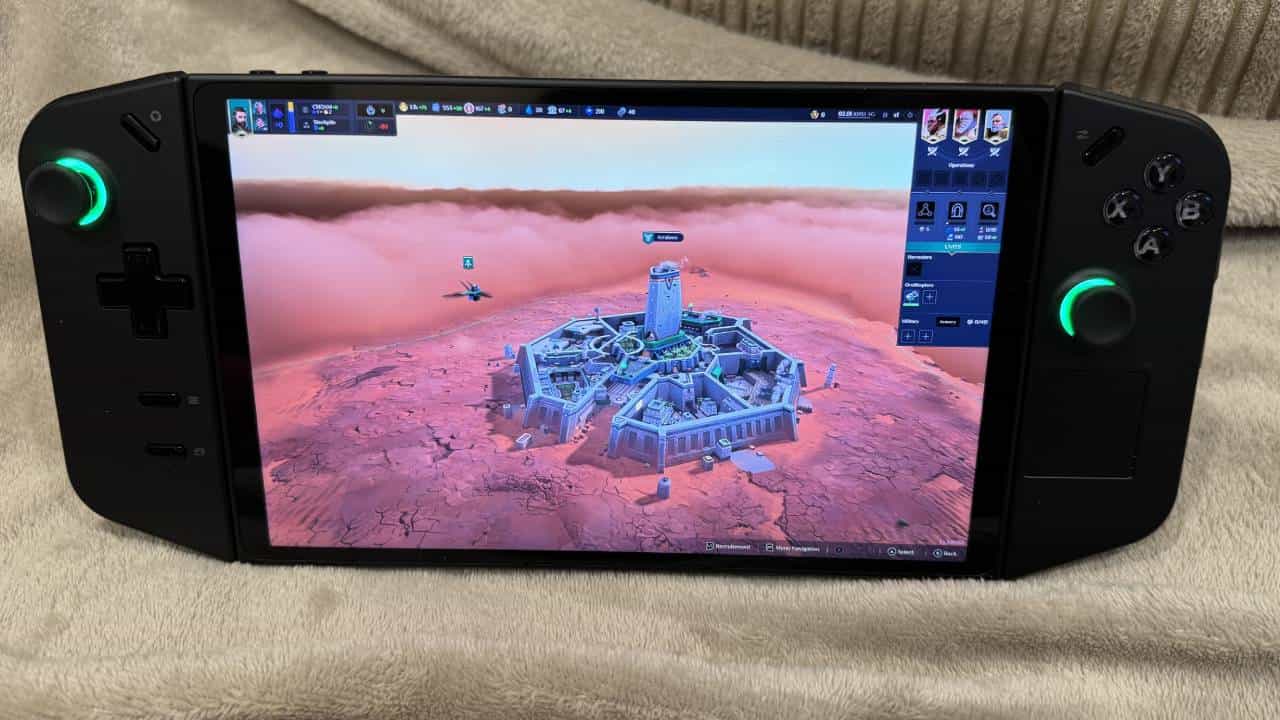
It’s a similar story when contrasting the displays of the Steam Deck OLED vs Lenovo Legion Go. As its namesake would suggest, Valve’s latest hardware revision is bolstered up by its OLED panel which features HDR and a peak brightness of 1000 nits. In short, it looks absolutely incredible and really helps to elevate the lower native resolution by offering deep inky blacks and bold expressive colors.
The Lenovo Legion Go is using a more conventional IPS-bonded LCD display with a peak brightness of 500 nits. As well as being considerably larger than the panel found on the Steam Deck OLED, the resolution is doubled from that machine’s 1280x800p to a staggering 2560x1600p which is a massive jump as far as handheld gaming goes. For context, that’s also a larger resolution than the similarly powerful Windows-fueled ASUS ROG Ally, too.
Deciding a winner is a tough one. On one hand, the lower native resolution of the Steam Deck OLED should be washed out by the larger and higher resolution panel of the Lenovo Legion Go, but the OLED tech is far superior to the IPS-bonded LCD with blacks and colors. Because of this, it’s going to have to be considered a tie; two vastly different approaches to playing games on the go with one favoring color accuracy and the other a higher resolution.
- Winner: Tie
Steam Deck OLED vs Lenovo Legion Go – Performance

This is what it all comes down to with the Steam Deck OLED vs Lenovo Legion Go, how your games will perform on the portable platforms. In theory, the latter console should have the edge. The Go boasts a bigger and higher resolution display with more powerful internal hardware and access to more game stores thanks to its Windows 11 OS, but the answer is more nuanced than that.
You see, Windows 11 is a great operating system when navigated around with a mouse and keyboard on one of the best gaming PCs or best gaming laptops. The Lenovo Legion Go wasn’t made with these considerations in mind, instead you’re having to get around the device through a small and middling trackpad or touch the screen and hope for the best. It’s not elegant by any means. What’s more, the multiple game launchers such as Xbox Game Pass, EA Play, GOG Galaxy as well as Steam are an obvious plus, even if the compatibility isn’t always guaranteed.
That’s where the Steam Deck OLED swoops in with its more straightforward approach to how games run. Through Deck Verification, you can know at a glance which titles are optimized for the hardware, which games are playable, and what software is unsupported without the guesswork. You will be more limited with games that will run on the hardware, as “unsupported” games like Dune: Spice Wars don’t work with Linux but will run just fine on Windows, so your mileage is going to vary. Compatibility is a double edged sword for both, do you prefer an easier route with a yes or no answer or want to roll the dice?
Then there’s the fact that while the Lenovo Legion Go has a 1600p display, the AMD Ryzen Z1 Extreme doesn’t have enough under the hood to play many games in such a high resolution. It’s fine for indie titles, older games, and less demanding software, but anything demanding is going to require downscaling. Fortunately, there’s a quick option to drop from the native resolution to 1200p and 800p. It’s a thoughtful inclusion, but makes opting for such a high resolution in the first place feel unnecessary as it can’t be fully used to its potential.
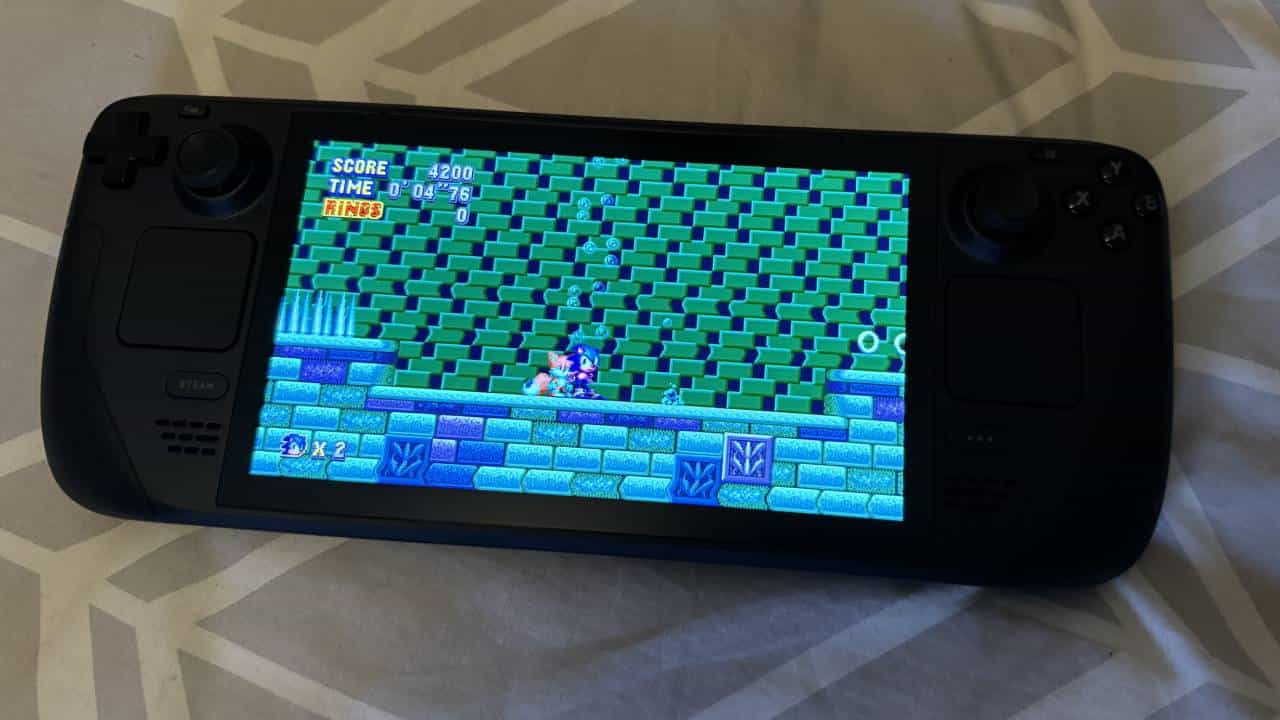
Naturally, downscaling games from 1600p to 800p (halving the resolution) on a large IPS LCD display means you’re going to notice muddier and blurrier textures far more. That’s a great strength of the Steam Deck OLED. Yes, it’s 1280x800p, sub-1080p, however, the hardware is optimized for this resolution and the panel’s OLED tech with its vibrant colors and deep blacks make for a smoother and less distracting overall experience. Against the LCD Steam Deck, the Go has the edge, but the panel can’t compete the same way. The vast majority of modern games are going to be happiest at 800p, so if you’re someone who plays a bit of everything then you may be more accommodated with a Steam Deck OLED.
When the Lenovo Legion Go can offer 1600p and 1200p in handheld modes, you’re often met with dazzling visuals drowned out by excessive fan noise and heat. Something has to give when you try to pack all that power into an ultra slimline portable form factor, so much so that it feels like the manufacturer tried to cram a gaming laptop’s worth of guts into too sleek a chassis. Ultimately, the Go pays the price, as does the consumer given its higher asking price.
- Winner: Steam Deck OLED
Which should you buy?
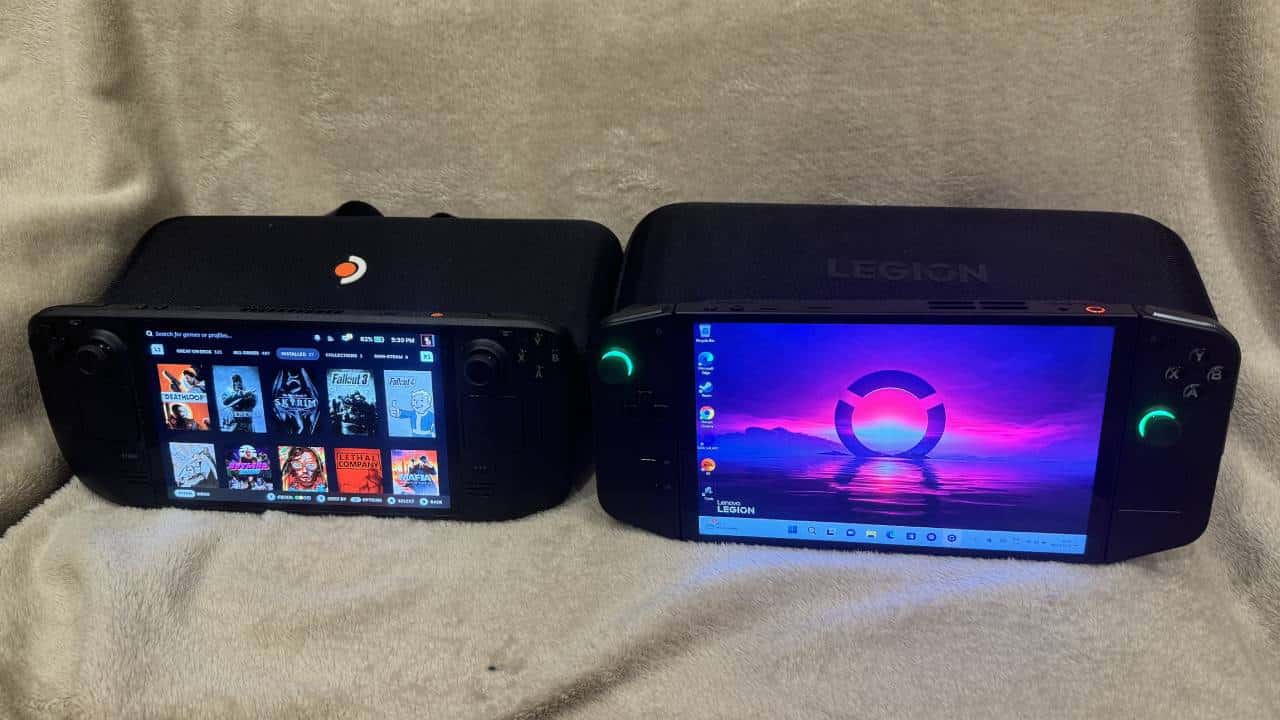
The Steam Deck OLED is the handheld gaming PC that I’m comfortable recommending to most people. Its lightweight, easy to use, features a wealth of games support and software tailored to its hardware, and benefits from an exceptional display. It may lack the larger and higher resolution display and Windows OS of its rival, but for the majority of users, I think you’ll have a better overall experience going with Valve’s hardware.
That’s not to count out the Lenovo Legion Go entirely, however. PC gaming enthusiasts are going to love the display, extra power under the hood and the full fat Windows 11 experience in a handheld form factor. The tinkerers wanting the bleeding edge of modern games who love messing with sliders and draining every drop of fps possible are going to enjoy having a genuine gaming PC in their hands with all the strengths and weaknesses associated with the platform. If you can stomach some quirks and price tag, it may be the option for you.
Both handheld systems should pair well with some of the best gaming monitors, best gaming keyboards, the best gaming mouse for the authentic desktop experience.

